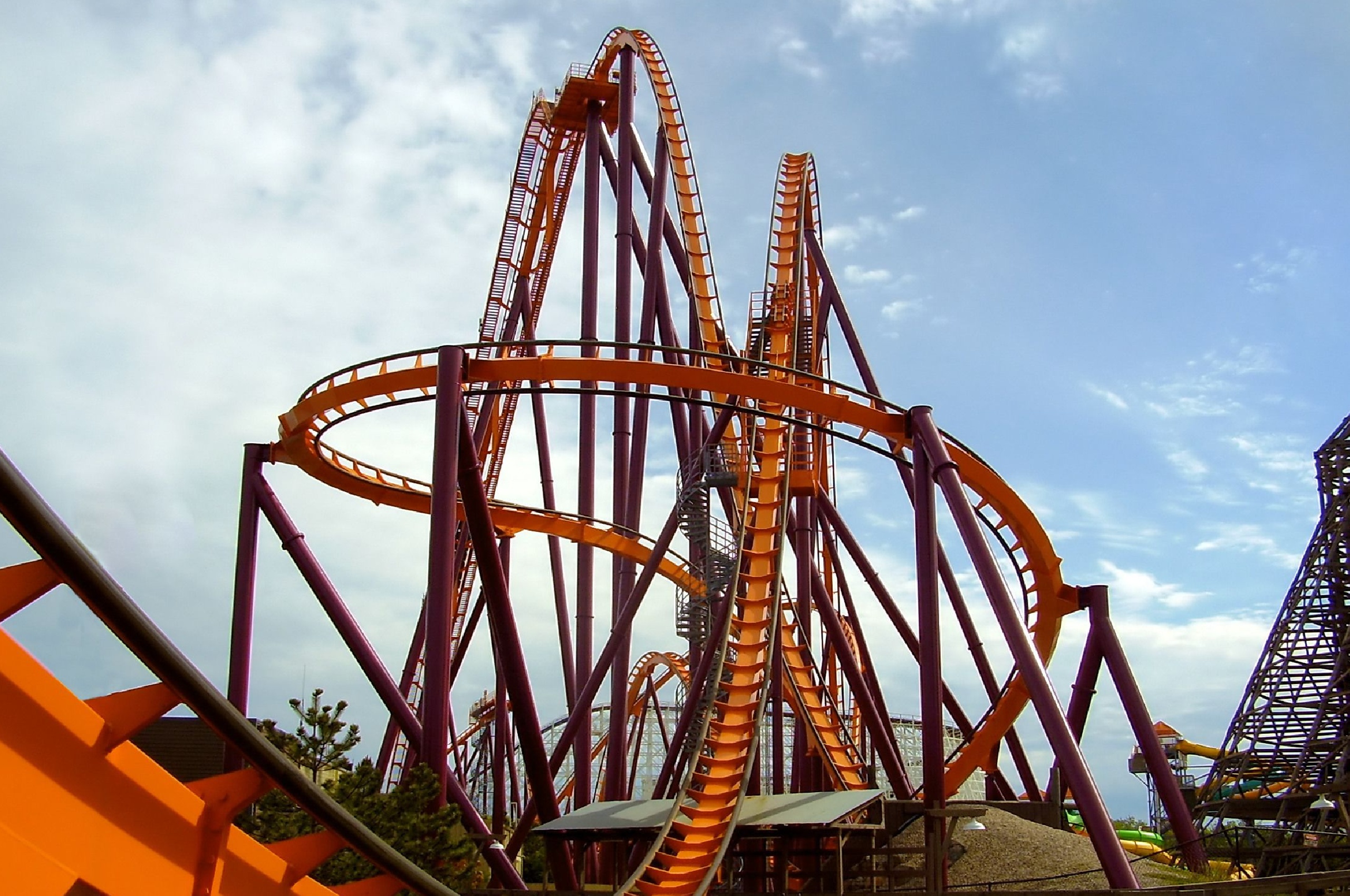Life is very much like a rollercoaster. There are times when everything feels like a slow, uphill battle, before you head into those fun-filled fast sections and loops.
When you reach retirement, this rollercoaster analogy can feel even more relevant, especially with how your income needs might shift. In the first few years of stopping work, you’ll probably start using your diligently saved wealth to achieve all those goals you planned for during your career.
As you get older and perhaps a little less physically able, your income needs might gently decline over time, especially as you’ve already achieved what you wanted.
Then, as you reach your later years, you might see your required income head into another rising slope as you pay for help around the home and potentially even long-term healthcare.
This particular pattern, sometimes referred to as the “retirement smile” or “wave”, describes three distinct stages of retirement that you might go through. While there are various names for these periods, they are commonly referred to as the:
- “Go-go” years, in which you start using your wealth to achieve your life goals
- “Slo-go” years, during which your income needs could drop as you’ve achieved your targets and you also start to slow down physically
- “No-go” years, a period of higher spending on aspects such as long-term care.
Your retirement is naturally unique, depending on who you are and what you want to do with your time, so it might not bear an exact resemblance to this.
But, it’s likely that you will experience at least some of what’s described above, all of which is fundamental to the way you’ll manage your income once you stop working.
So, read about these three stages of retirement, including what each one might mean for your finances and how we can help you manage your wealth throughout.
1. Go-go years – Using your wealth to achieve your goals
As described above, the go-go years are the early days of retirement when you might start using your wealth to achieve all your targets. As a result, your income needs are likely to be relatively high.
What’s involved in your go-go years is likely to be the most specific to you, as it will revolve around what you want out of life as an individual. This could be activities such as:
- World travel or going on multiple holidays a year
- Outdoor pastimes, such as gardening or taking up a new sport
- Spending time with friends and family.
The latter of these could even be the most expensive if your goal is to support loved ones with their own financial future by gifting wealth for endeavours such as buying a home or saving for retirement.
Whatever you want to do in this first stage of retirement, one way to specifically prepare for this period is to plan your finances around these specific goals. That way, you know what sort of income you’ll need to reach those targets.
This is how we encourage you to approach financial planning at Cordiner Wealth. We’ll always start by understanding your goals and what you want to achieve in retirement, and then design a strategy with this in mind that ensures you have what you need to reach those targets.
We also use sophisticated cashflow modelling software to show you a projection of what you can afford to spend, accounting for variables such as investment performance and inflation. This can help you avoid overspending and ensure that your retirement lifestyle is sustainable.
Equally, it can also prevent you from underspending for fear of running out of money. That way, you won’t be tempted to live more conservatively than you need to, instead spending to achieve your goals with confidence.
2. Slo-go years – Slowing down as you get older
The slo-go years are a logical next step after your days of spending in the go-go years. In this period, you might typically expect to see your spending reduce. There are a few different reasons why this is often the case.
Firstly, it could be out of choice. You may feel that you’ve achieved what you want to with your wealth, whether that’s travelling the world or making financial gifts to loved ones, and you’re now content to settle into a quieter period.
Alternatively, it might be as a result of your age. In later life, you may not have the same get-up-and-go that inspired you to chase your dreams. Furthermore, being a little older, it could be more physically demanding to do so.
Finally – and perhaps most concerningly – there’s the possibility that you overspend in your go-go years, and so slowing down is a necessity to ensure you have enough left to enjoy a comfortable lifestyle.
No matter the circumstances, working with a financial planner can be powerful here. We can help you calculate the income you need to draw from your pensions or other savings.
We might also make recommendations for organising your wealth for a time when you’re no longer around. This could revolve around Inheritance Tax (IHT) planning, or using trusts to ringfence wealth for specific individuals.
As for running out of wealth, this is where creating a cashflow model is so important. In doing so, you’ll know what you can afford and will be able to spend freely, safe in the knowledge that you won’t run out of money in your later years.
3. No-go years – Having greater care needs in later life
Finally, the no-go years represent that final ascent in the retirement rollercoaster. This is the point where your outgoings could increase again, potentially even eclipsing that of your early retirement because of potential care costs.
Of course, your experience of the no-go years is perhaps the most variable of all three stages of retirement, as it will depend greatly on your health in your later years.
Some people are able to continue living healthily and independently well into their 90s. So, you may never encounter any costs whatsoever.
But if you do, whether that’s at home, in a residential care facility, or somewhere with nursing support, this could drive up the income you need.
Figures from care information provider Lottie show that the average cost of care in your own home is £28 an hour. This translates to £140 a week for five hours of care a week. The average cost of hiring a live-in carer is £228 a day.
Meanwhile, other data from Lottie shows the average costs for residential care are £1,387 a week (£72,000 a year) and £1,545 a week (£80,000 a year) for nursing care.
Although you might typically only need care in a facility like this for perhaps one or two years in most cases, this is still a significant outgoing. As a result, you can see how this final stage of retirement could perhaps be the most expensive.
Additionally, you don’t know if you’ll need care until you get there, and not everyone does.
Fortunately, a financial planner can help you prepare for these costs, particularly if you’re concerned with the burden it could create for your family.
For example, we could account for this cost in your cashflow model and ensure that you earmark a certain portion of your wealth to put towards it should you ever need care. In doing so, you can be confident that this cost won’t fall on your loved ones’ shoulders.
That way, regardless of whether you need care, there will be funds available to cover the costs. You could then leave this to your beneficiaries if you pass away without requiring care.
We can also explain the funding options available with your local authority, and how you may be affected by capital limits depending on how your wealth is organised.
Again, no matter what your no-go years look like, knowing that you have a plan in place for these eventualities can help you enjoy your retirement without needing to worry.
Get in touch
We can design a bespoke plan for you that ensures you’re financially secure throughout the whole of your retirement.
If you’d like to find out more about how we can help, please email hello@cordinerwealth.co.uk or call 0113 262 1242 to speak to us today.
Please note
This article is for general information only and does not constitute advice. The information is aimed at retail clients only.
The Financial Conduct Authority does not regulate tax planning, estate planning, or cashflow planning.
A pension is a long-term investment not normally accessible until 55 (57 from April 2028). The fund value may fluctuate and can go down, which would have an impact on the level of pension benefits available. Past performance is not a reliable indicator of future performance.
The tax implications of pension withdrawals will be based on your individual circumstances. Thresholds, percentage rates, and tax legislation may change in subsequent Finance Acts.






